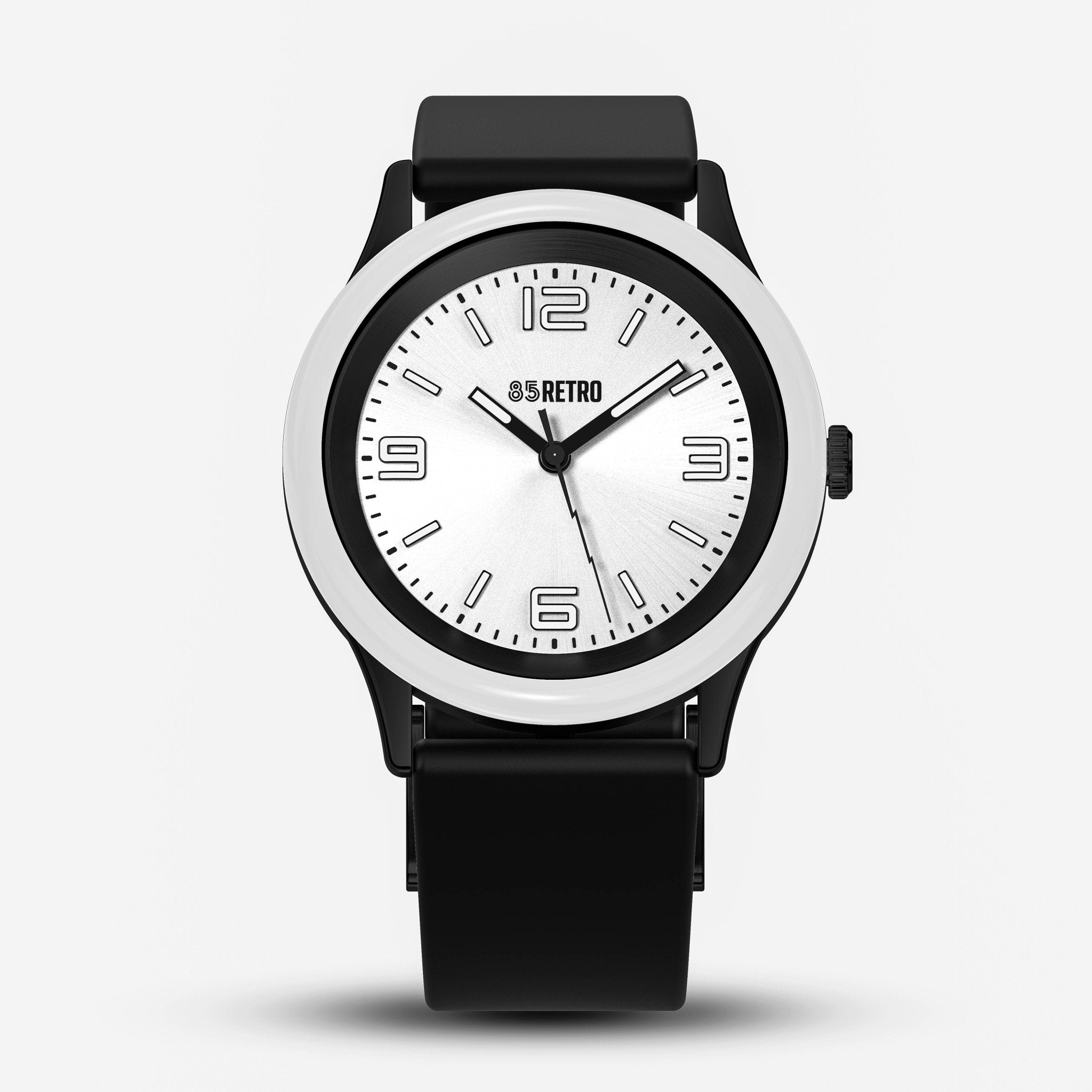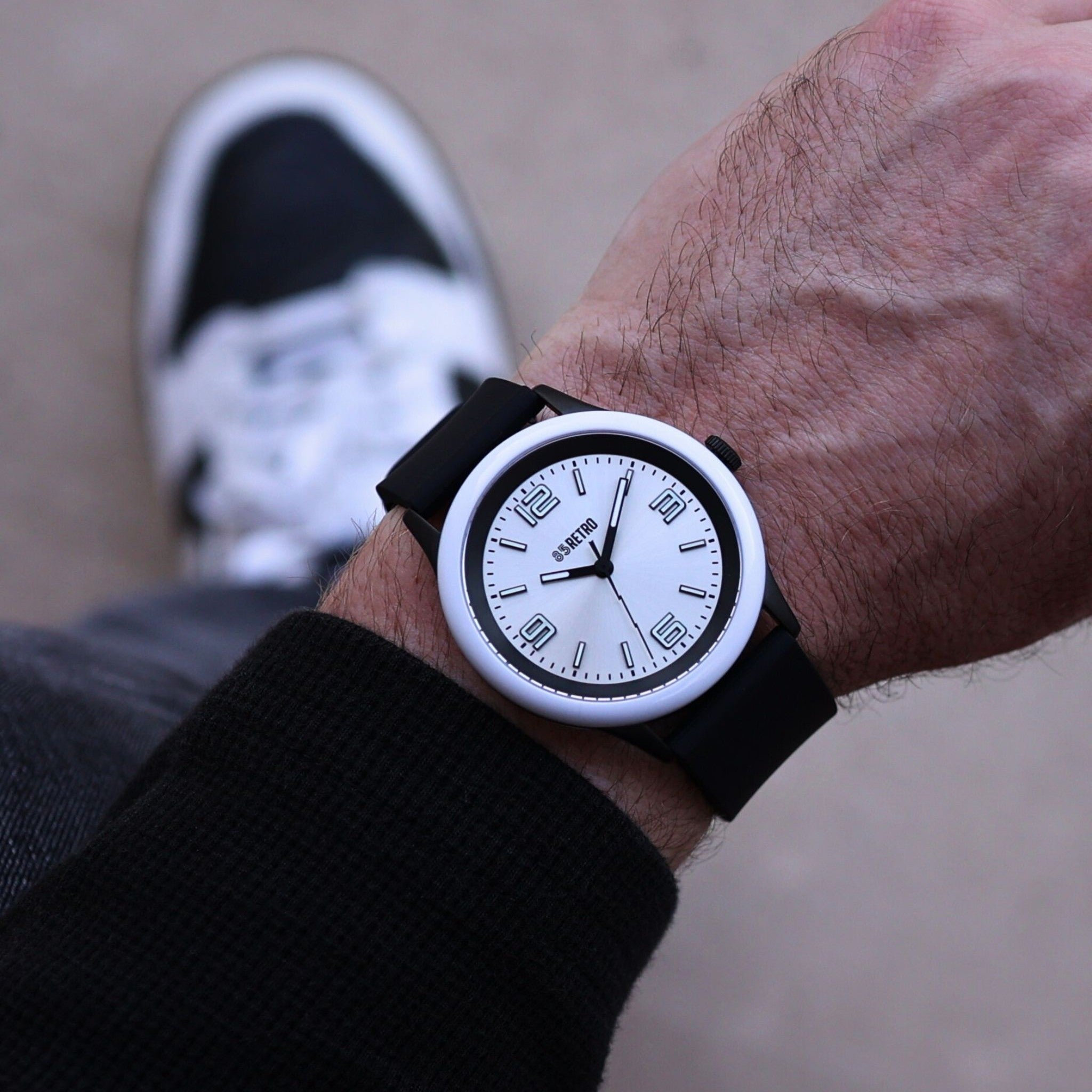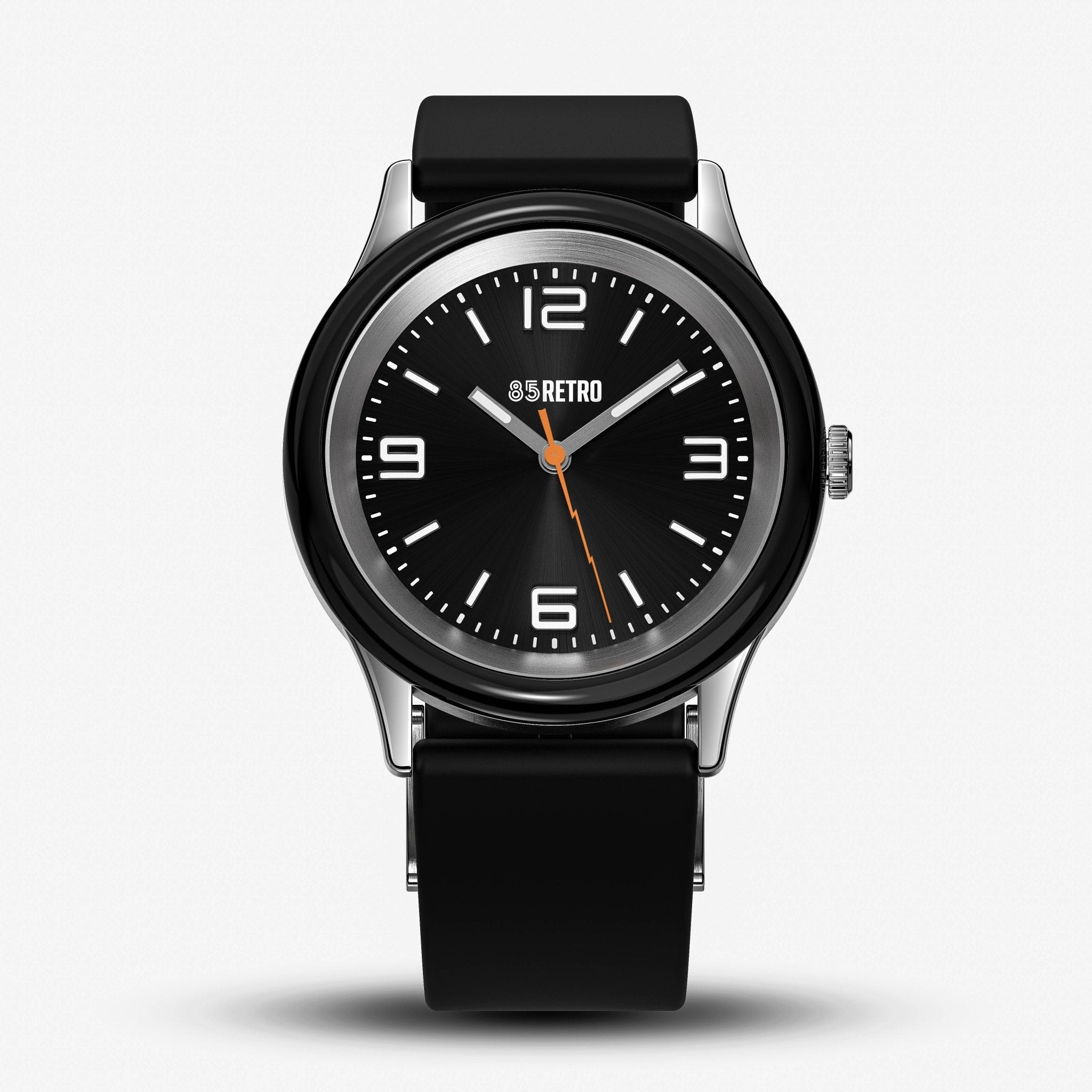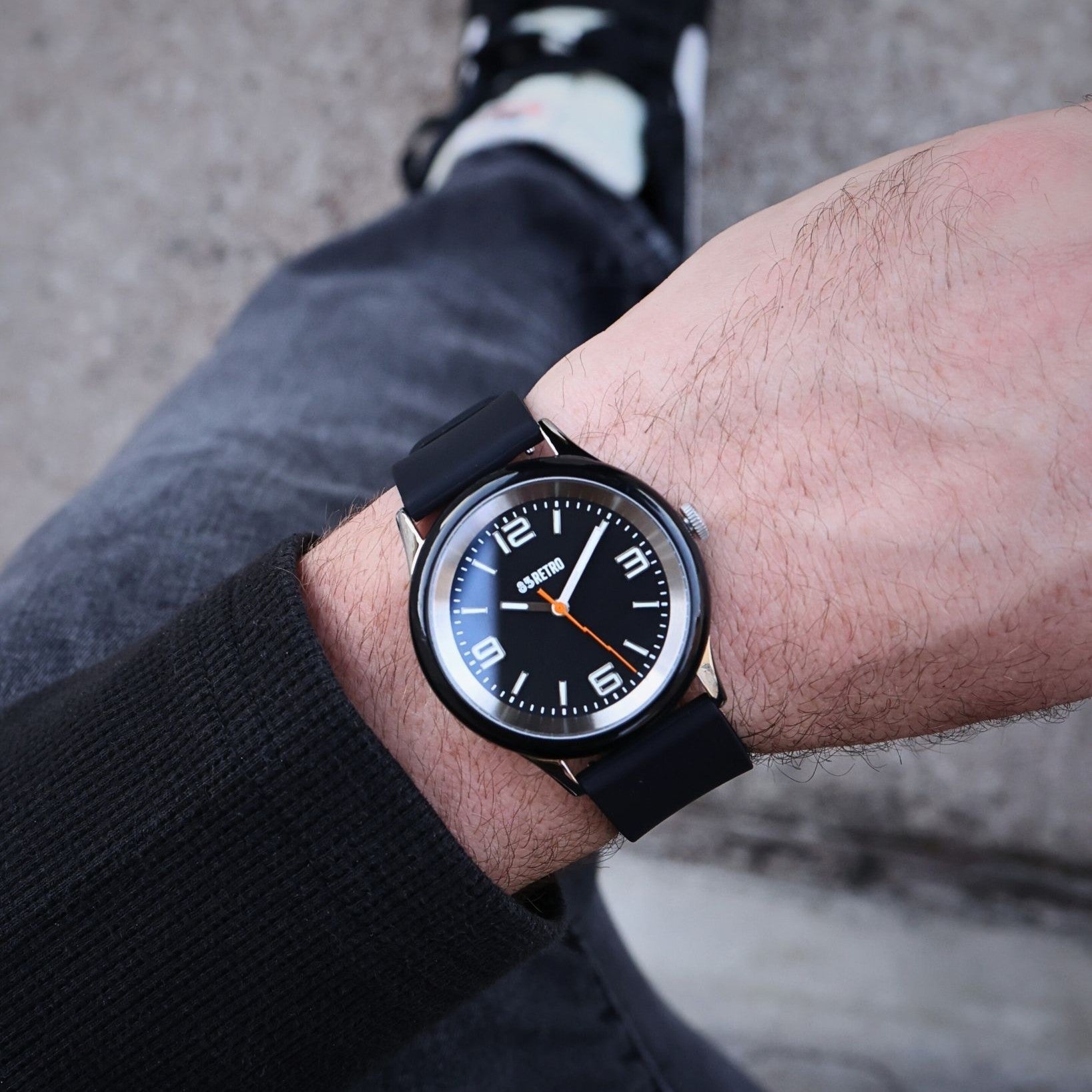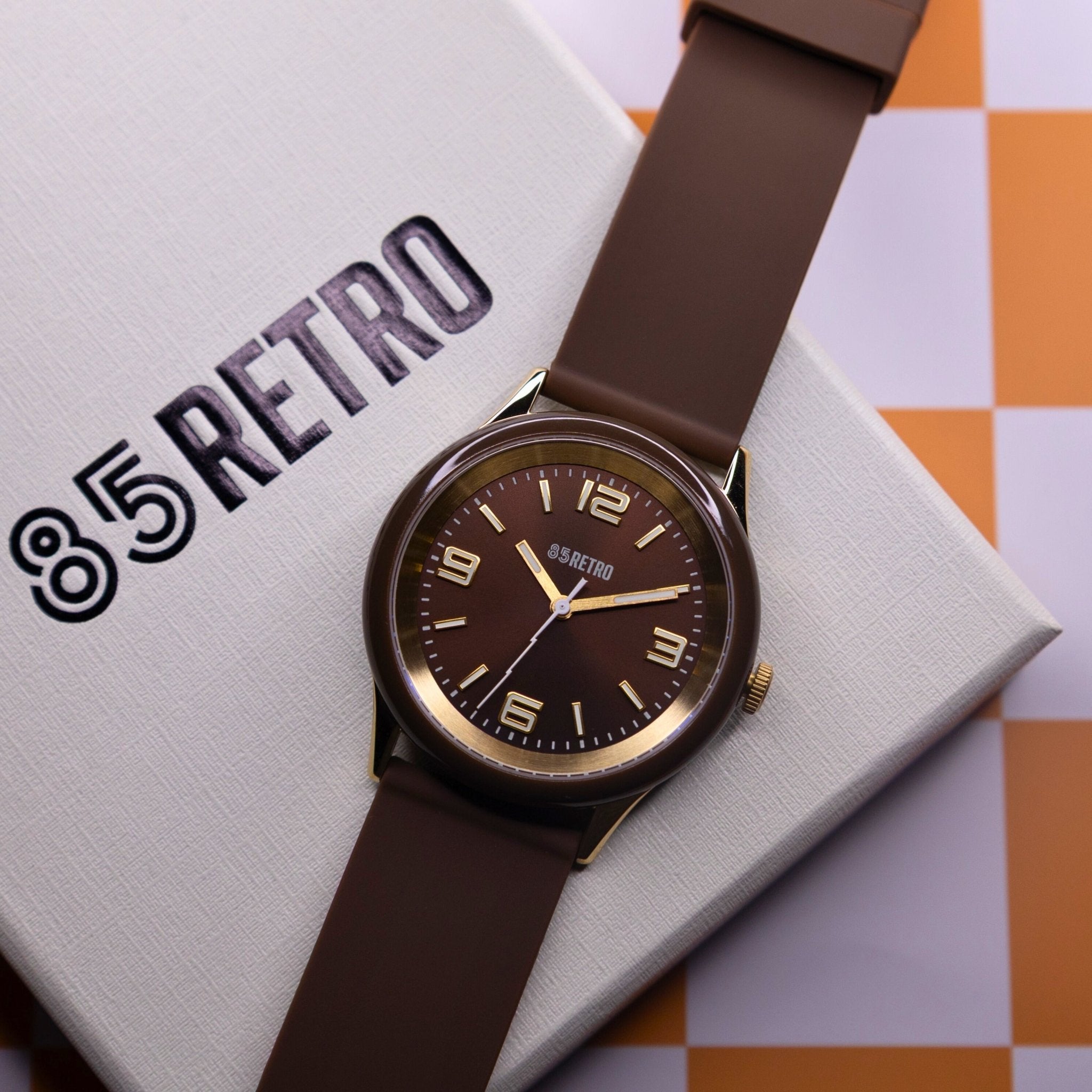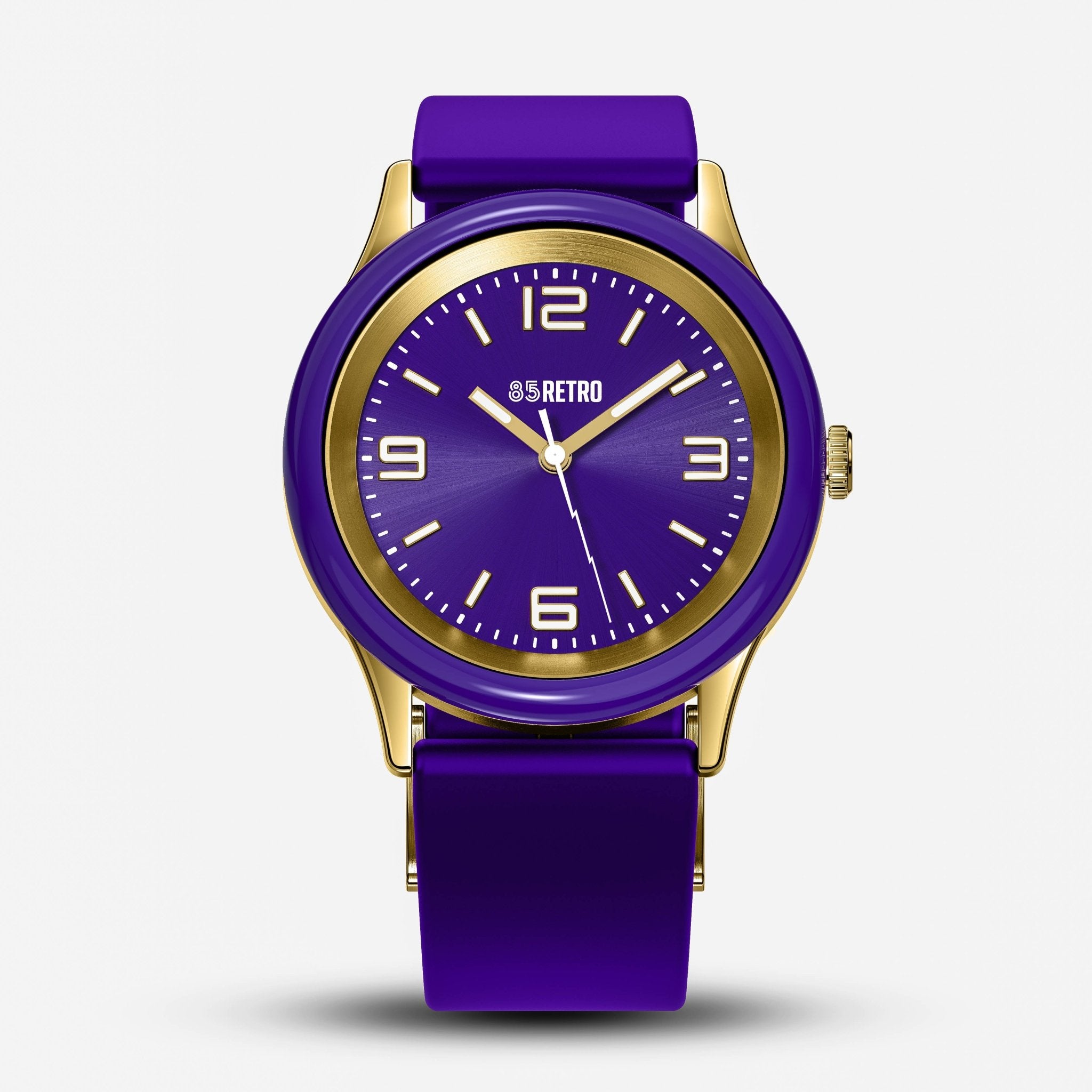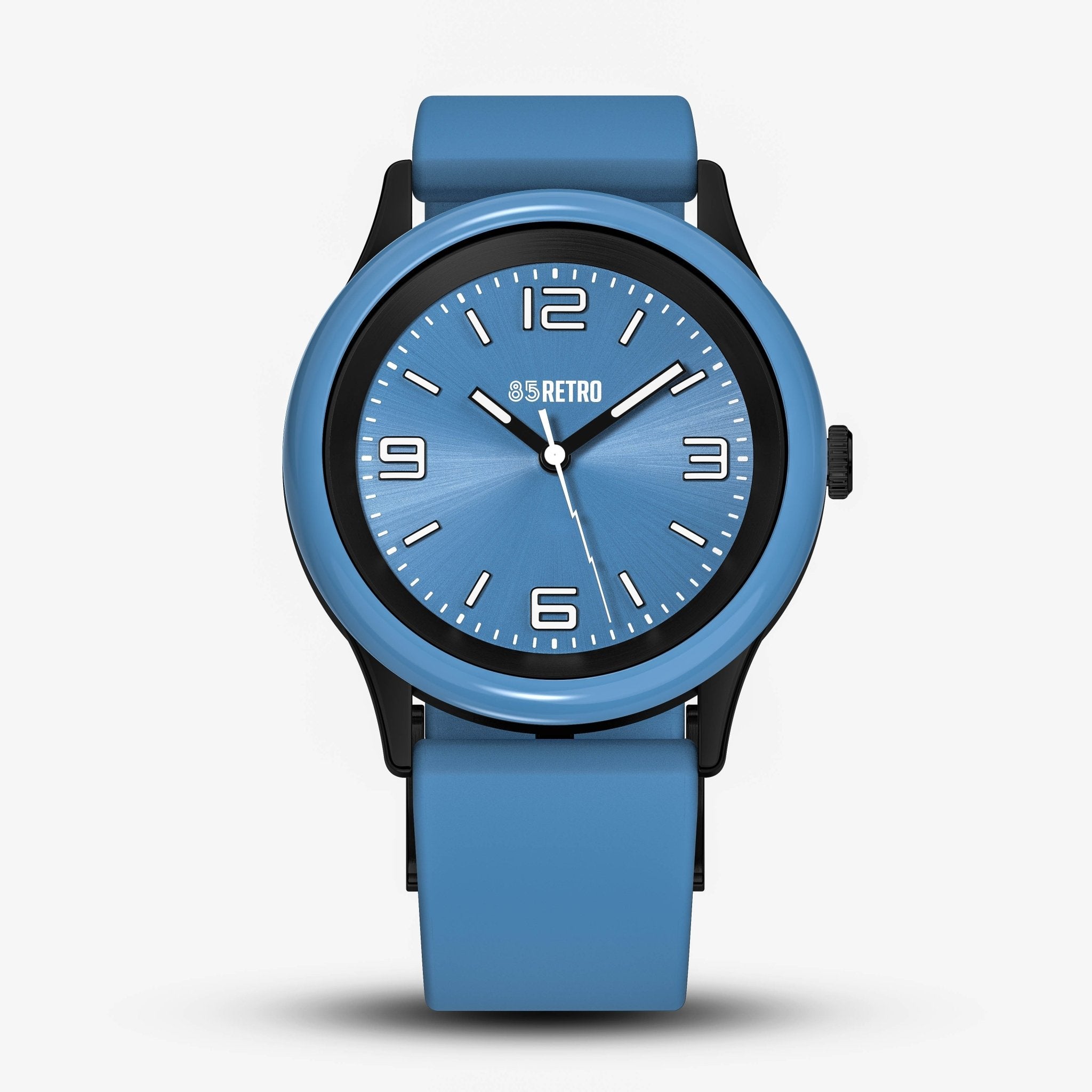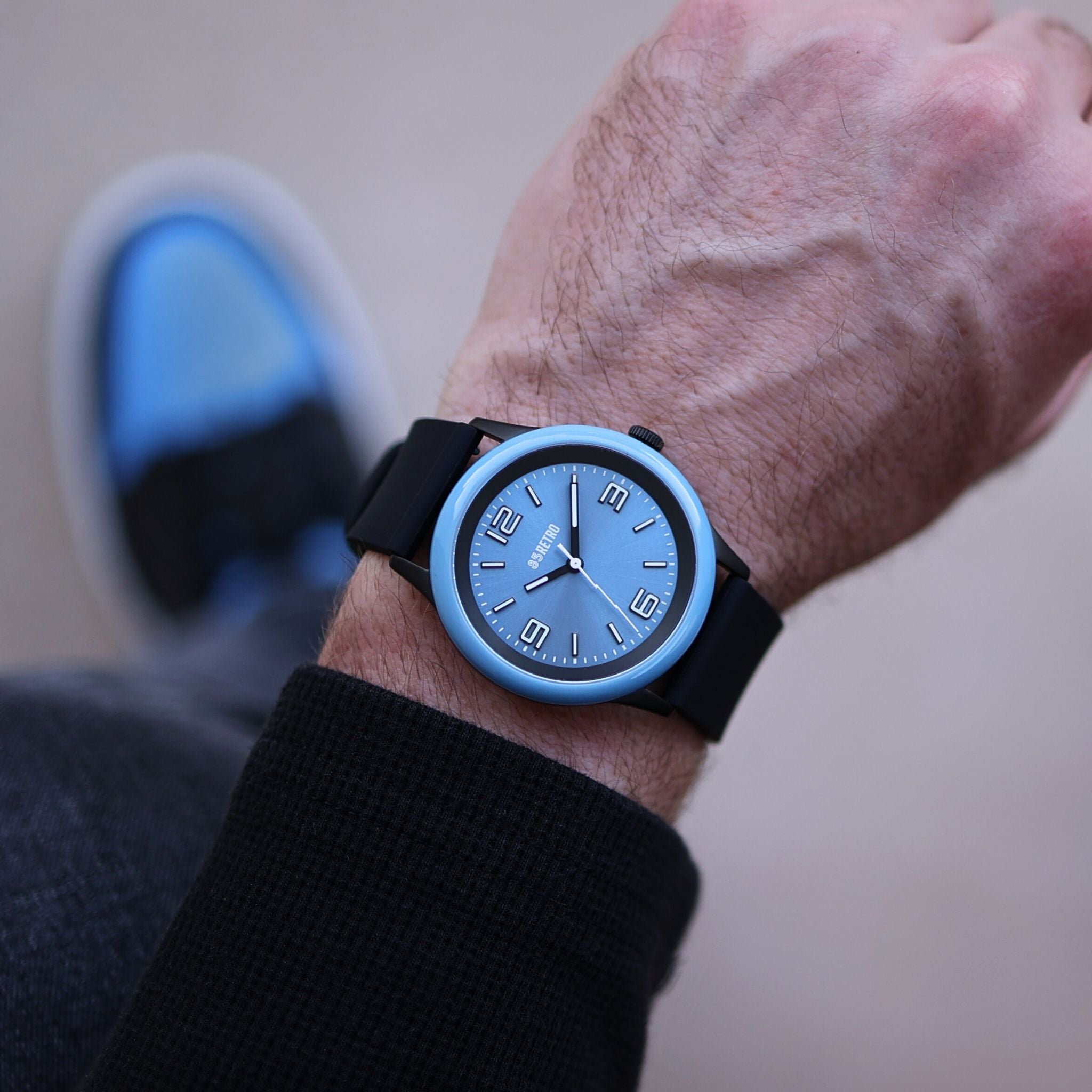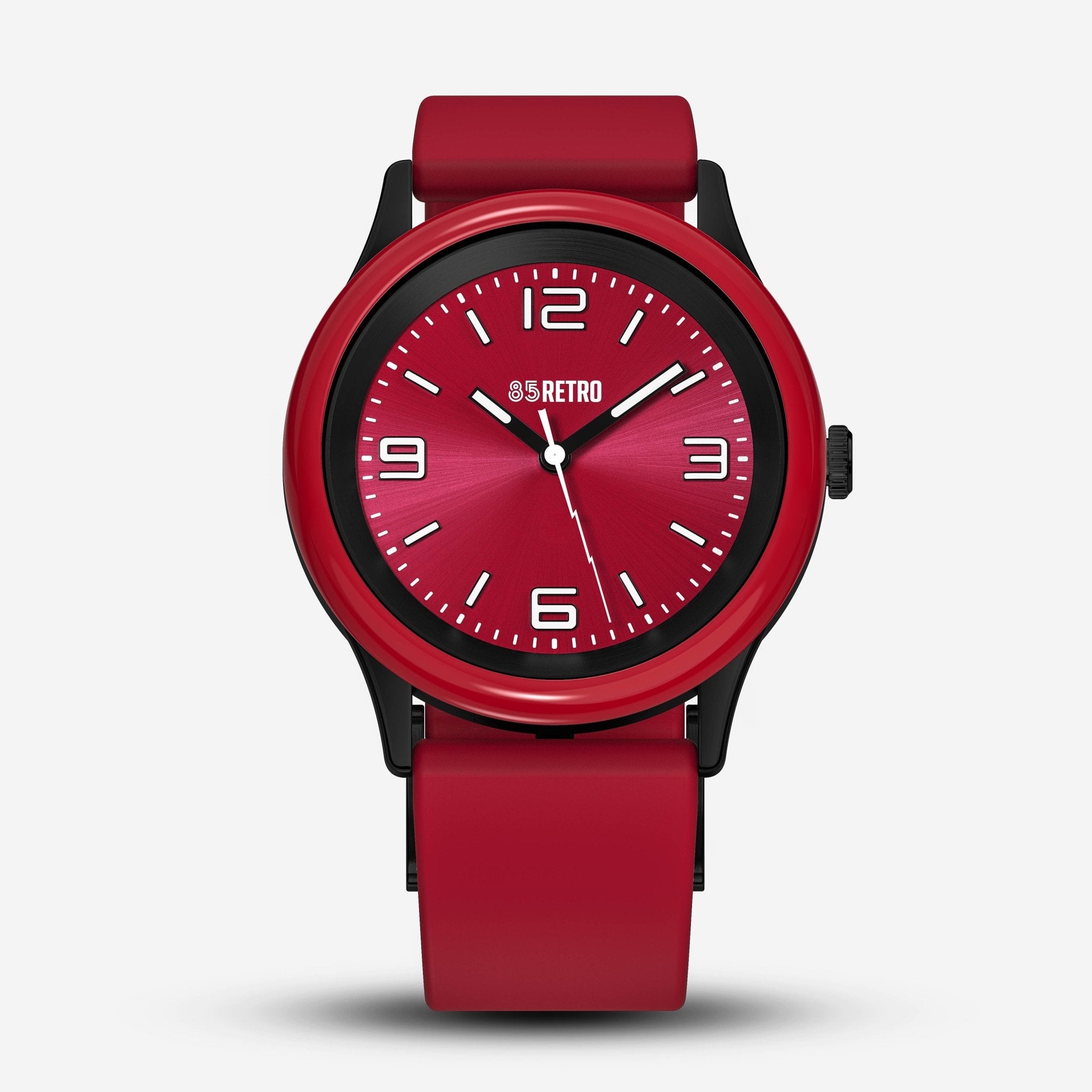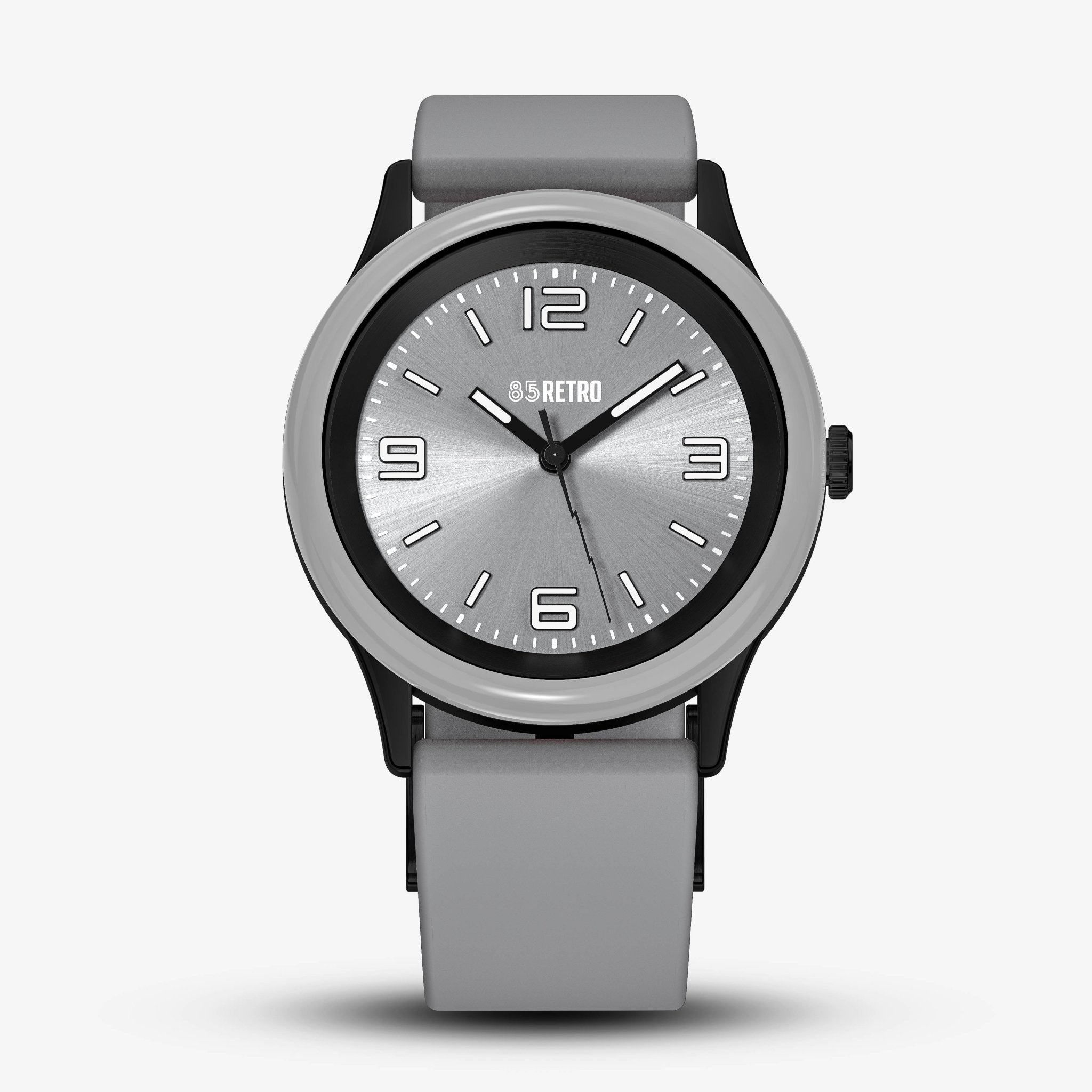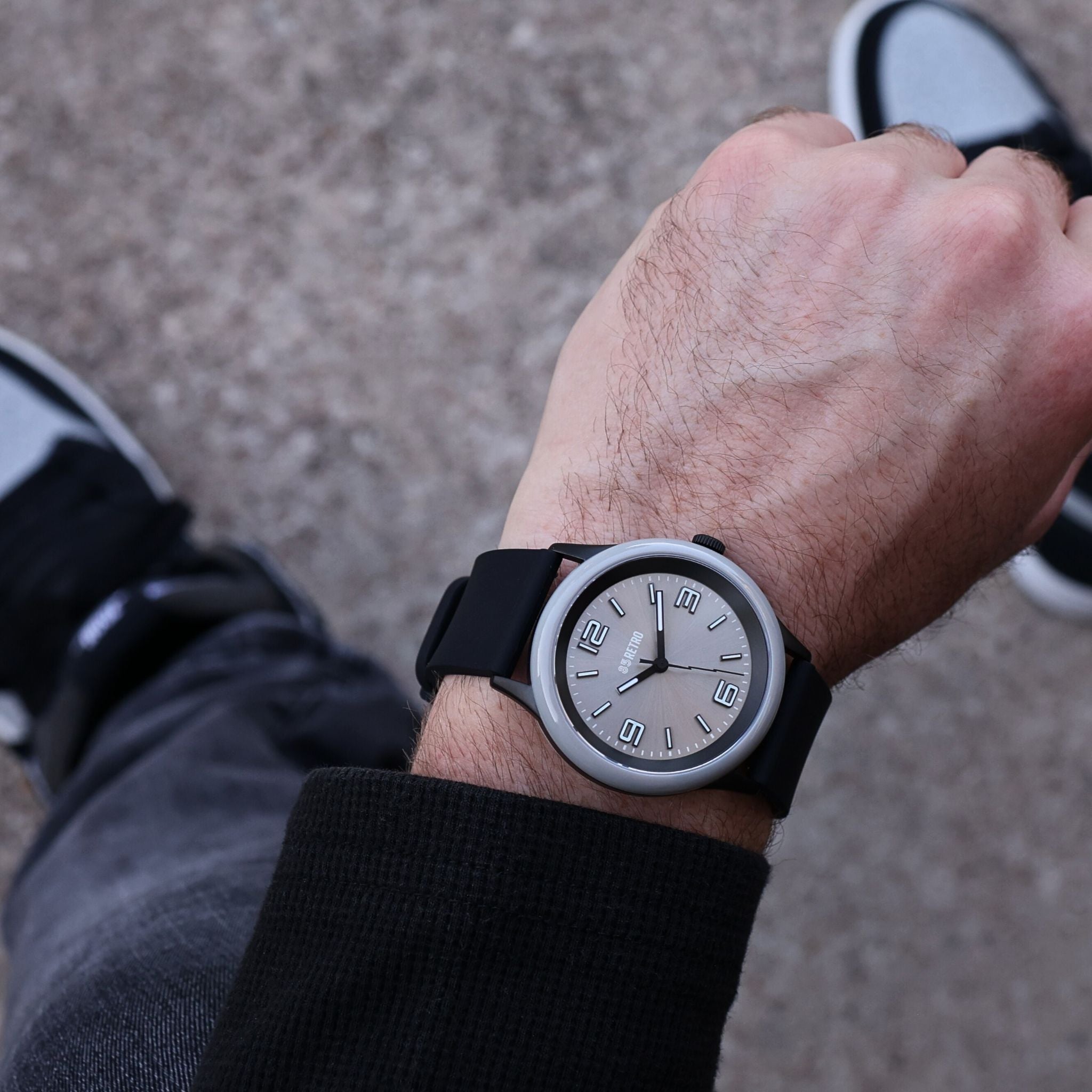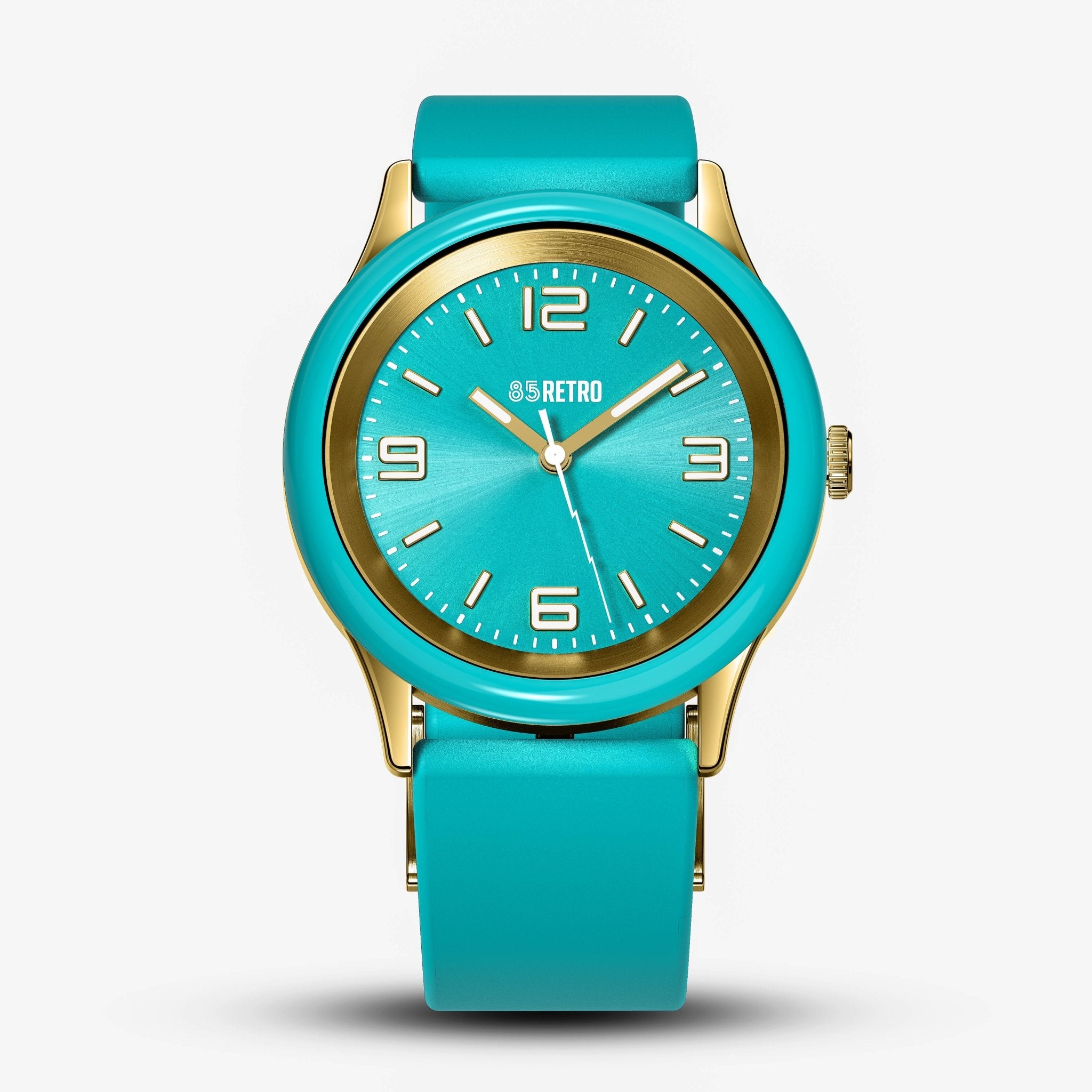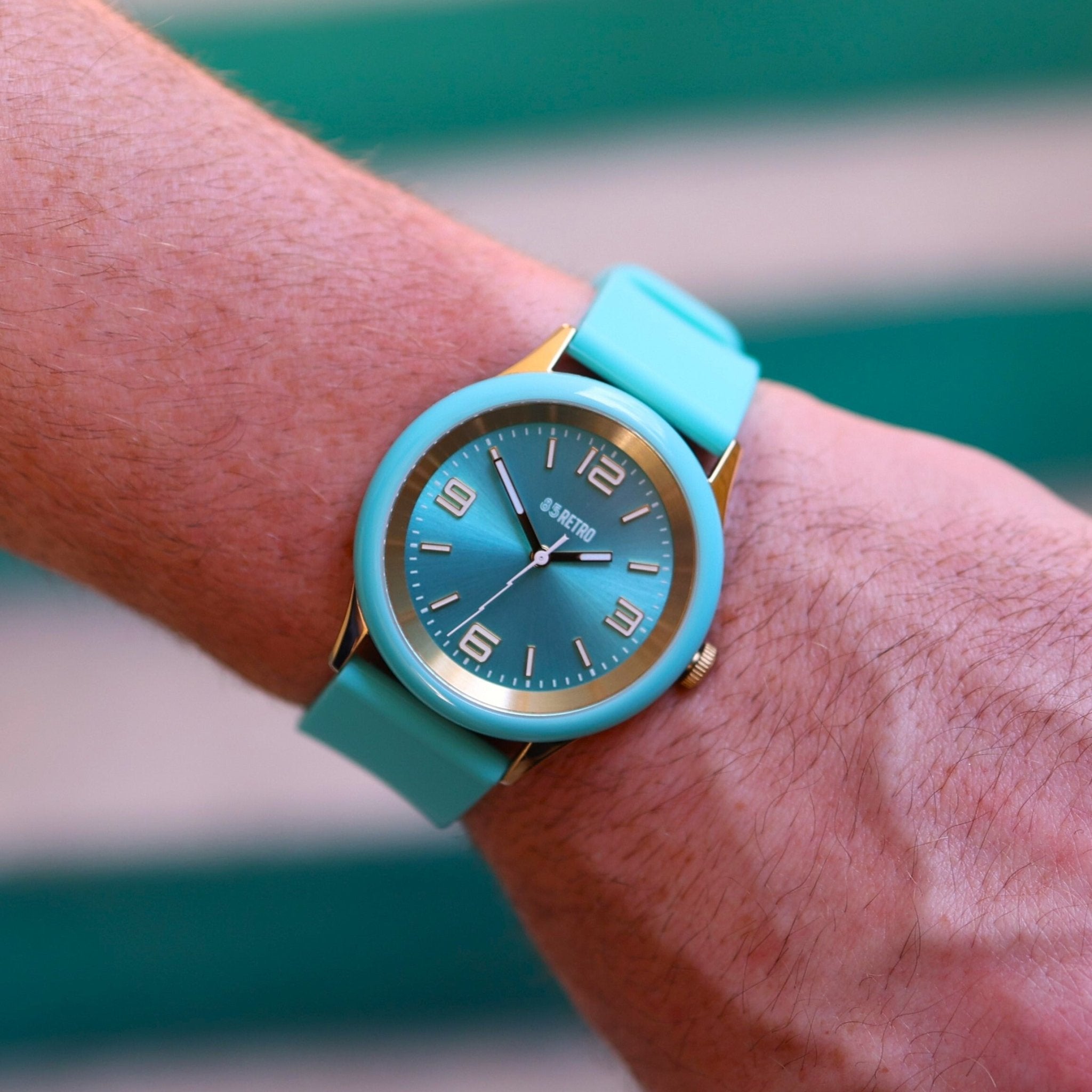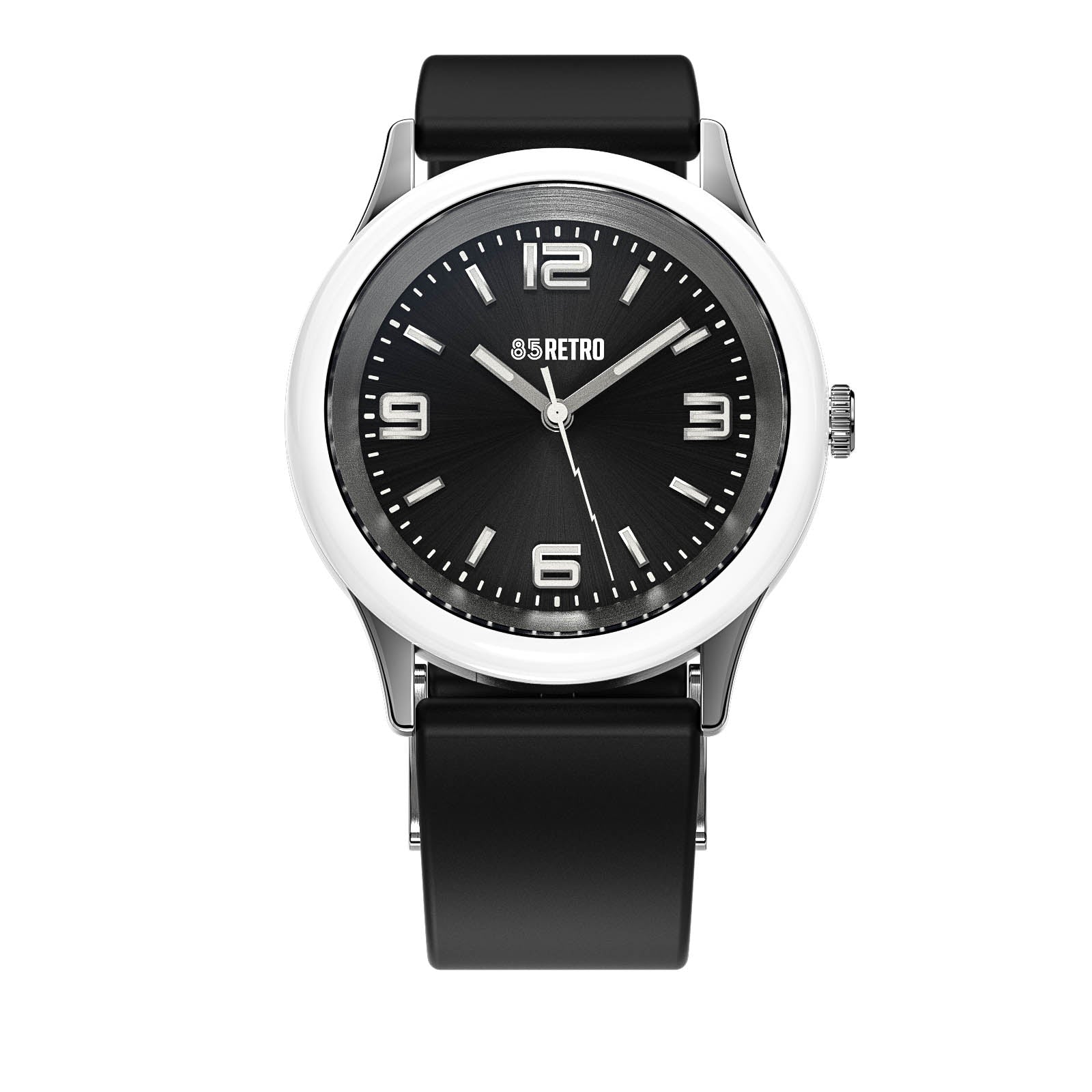When choosing a watch, one of the most important factors to consider is the material. From the case to the strap, the materials used in a watch not only impact its durability and comfort but also play a significant role in defining your overall style. Whether you’re looking to pair your watch with sneakers, colorful apparel, or more formal outfits, understanding the different watch materials can help you make the best choice. Here’s a comprehensive guide to the most popular watch materials and how to choose the one that’s right for you.
1. Stainless Steel: The Versatile Classic
Stainless steel is one of the most common materials used in watchmaking, known for its durability, resistance to corrosion, and sleek appearance. It offers a timeless look that works well with both casual and formal attire. Stainless steel watches are versatile, pairing seamlessly with a variety of outfits, from jeans and sneakers to suits and dress shoes. The 85RETRO™ Model 1 utilizes 316L stainless steel, providing a sturdy yet stylish option that fits into any wardrobe.
Pros:
- Highly durable and resistant to scratches and corrosion.
- Versatile and suitable for both casual and formal settings.
- Easy to clean and maintain.
- Available in various finishes, such as brushed, polished, or matte.
Cons:
- Can be heavier than other materials.
- May feel cold against the skin, especially in colder climates.
Best For: Everyday wear, business casual, and pairing with a wide range of outfits, including colorful sneakers and athleisure.
2. Titanium: Lightweight and Hypoallergenic
Titanium watches are known for being lightweight, strong, and hypoallergenic, making them an excellent choice for those with sensitive skin. Titanium offers the same durability as stainless steel but with a lighter feel on the wrist, which is ideal for active lifestyles. This material is also resistant to rust and corrosion, making it perfect for outdoor and sports activities. Its sleek, matte finish adds a modern touch, making titanium watches a great fit for contemporary and sporty styles.
Pros:
- Extremely lightweight and comfortable to wear.
- Hypoallergenic, suitable for sensitive skin.
- Strong and resistant to corrosion.
- Modern and sleek appearance.
Cons:
- Can be more expensive than stainless steel.
- Prone to scratches, though some titanium watches have protective coatings.
Best For: Active lifestyles, sporty and casual looks, and pairing with performance sneakers and athleisure.
3. Ceramic: Scratch-Resistant and Stylish
Ceramic watches are celebrated for their luxurious look and superior scratch resistance. They are available in a variety of colors, from classic black and white to bold hues, making them a stylish choice for those who want a distinctive accessory. Ceramic is also lightweight and hypoallergenic, offering comfort along with durability. However, ceramic watches can be brittle and prone to cracking if dropped, so they require careful handling.
Pros:
- Highly scratch-resistant and maintains its appearance over time.
- Lightweight and hypoallergenic.
- Available in a wide range of colors for personalized style.
- Adds a sleek, modern look to any outfit.
Cons:
- Can be brittle and susceptible to cracking or chipping.
- Typically more expensive than metal watches.
Best For: Fashion-forward individuals, minimalist and bold styles, and pairing with sleek sneakers and high-end streetwear.
4. Resin and Plastic: Durable and Affordable
Resin and plastic watches are popular for their affordability, durability, and versatility, making them a go-to choice for sporty and casual wear. These materials are often used in digital and outdoor watches, offering resistance to impacts and weather conditions. Resin and plastic watches are typically lightweight, making them comfortable for all-day wear. They’re also available in a variety of colors and designs, allowing for fun and vibrant pairings with casual and athletic apparel.
Pros:
- Lightweight and highly durable.
- Resistant to impacts, scratches, and water.
- Affordable and available in a wide range of styles and colors.
- Easy to clean and maintain.
Cons:
- May look less premium compared to metal or ceramic watches.
- Can feel less substantial on the wrist.
Best For: Outdoor activities, casual and sporty looks, and pairing with athletic sneakers and everyday streetwear.
5. Leather: Timeless and Versatile
Leather straps are a classic choice for watches, offering a sophisticated look that suits both casual and formal settings. Leather is comfortable, molds to your wrist over time, and comes in a variety of finishes, including smooth, textured, and suede. Brown and black leather straps are the most versatile, pairing well with almost any outfit, while colored leather straps can add a pop of personality. However, leather requires care to maintain its appearance and is not ideal for water exposure.
Pros:
- Comfortable and molds to the wrist over time.
- Versatile and suits both casual and formal attire.
- Available in a wide range of colors and textures.
- Adds a classic and refined touch to any outfit.
Cons:
- Requires regular care to prevent wear and tear.
- Not water-resistant and can be damaged by moisture.
- May not be suitable for highly active or outdoor use.
Best For: Business casual, smart casual, and formal looks, and pairing with dress sneakers or leather-accented footwear.
6. Fabric and NATO Straps: Casual and Customizable
Fabric and NATO straps are popular for their casual appeal and versatility. These straps are often made from nylon, canvas, or other durable materials, offering comfort and breathability. Fabric straps are easily interchangeable, allowing you to switch up your look based on your outfit or mood. They come in a variety of colors and patterns, making them a fun choice for pairing with colorful sneakers and casual wear.
Pros:
- Lightweight, breathable, and comfortable.
- Easily interchangeable for versatile styling.
- Available in numerous colors and patterns.
- Affordable and easy to replace.
Cons:
- Can be less durable than metal or leather over time.
- Not suitable for formal settings.
- May require frequent cleaning, especially lighter colors.
Best For: Casual outings, summer and spring wear, and pairing with colorful or patterned sneakers.
7. Rubber and Silicone: Sporty and Resilient
Rubber and silicone straps are ideal for sporty and active lifestyles, offering flexibility, comfort, and resistance to water and sweat. These materials are perfect for watches designed for outdoor activities, fitness, and everyday casual wear. Rubber and silicone straps are also easy to clean and maintain, making them a practical choice for those who need a durable, low-maintenance watch.
Pros:
- Flexible, comfortable, and water-resistant.
- Durable and resistant to wear and tear.
- Easy to clean and maintain.
- Available in a wide range of colors, perfect for sporty looks.
Cons:
- Can feel less refined compared to metal or leather straps.
- Not suitable for formal settings.
- May attract dust and lint.
Best For: Sporty and casual wear, outdoor activities, and pairing with athletic and performance sneakers.
Conclusion
Choosing the right watch material is key to finding a timepiece that not only complements your style but also suits your lifestyle. From the versatility of stainless steel to the lightweight comfort of titanium, each material offers unique benefits that can enhance your overall look. Whether you’re pairing your watch with sneakers, colorful apparel, or more formal outfits, understanding the characteristics of different watch materials will help you make an informed decision. Explore options like the 85RETRO™ Model 1, which offers a blend of stylish and durable materials, perfect for every occasion and personal style.


